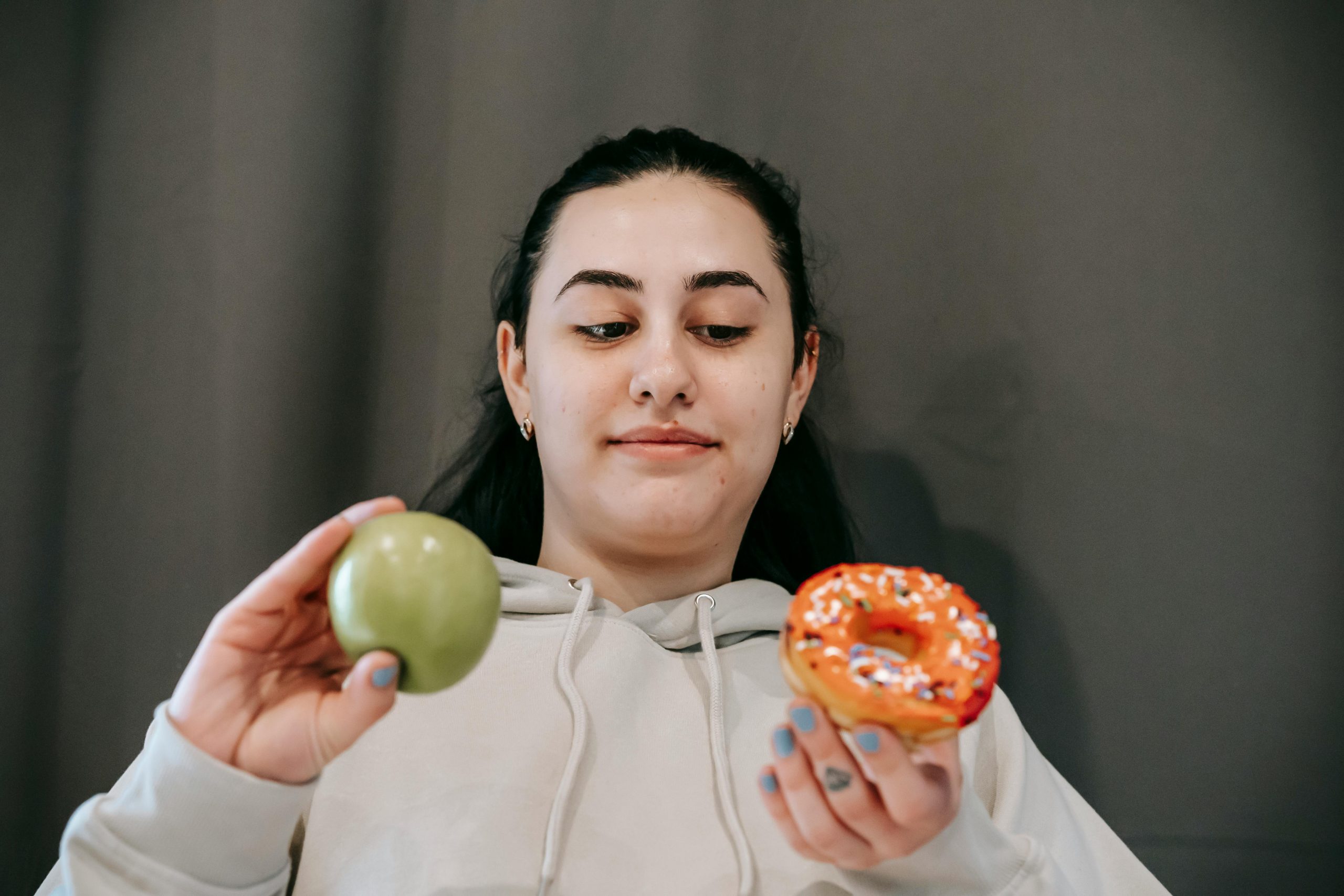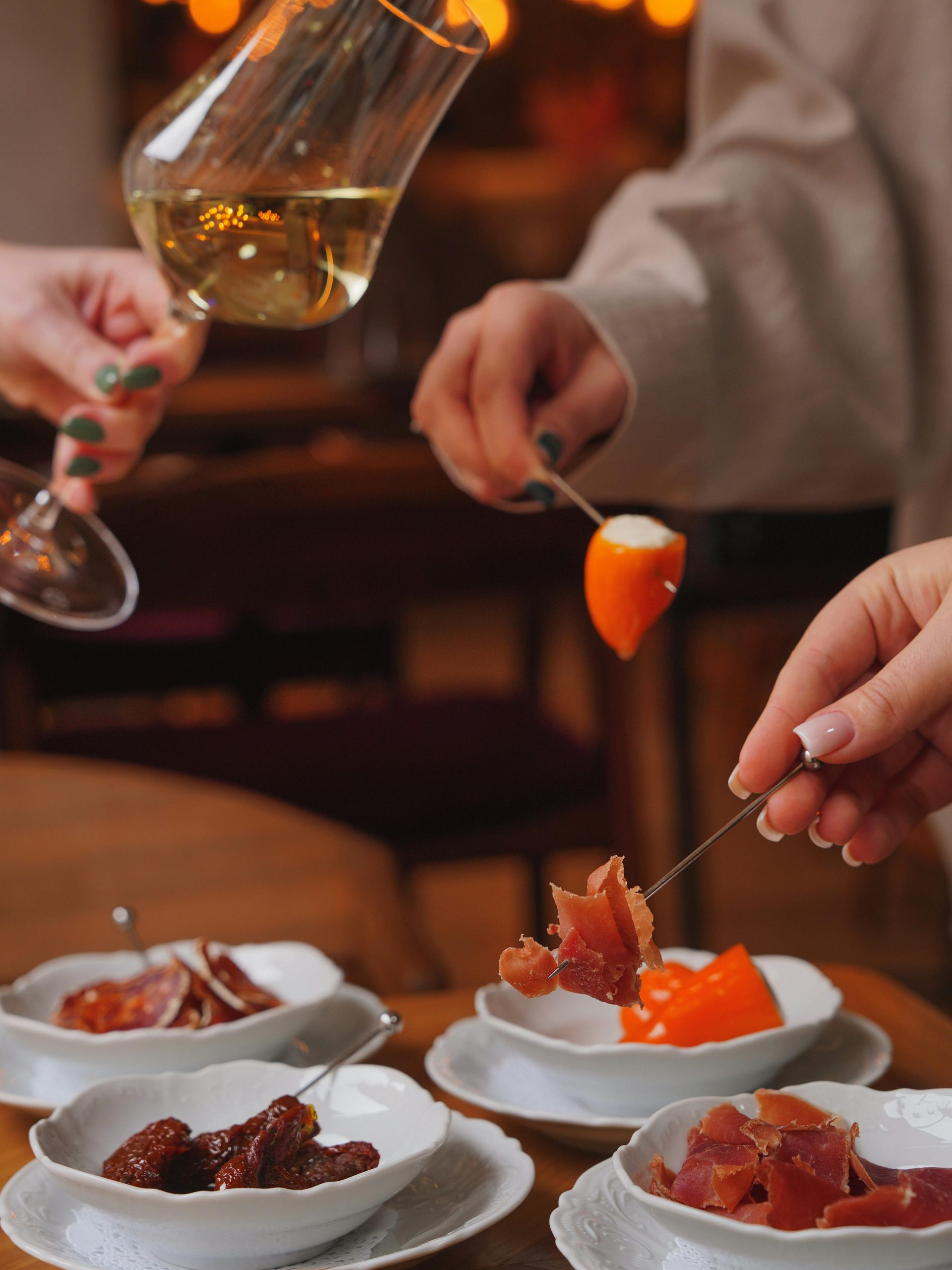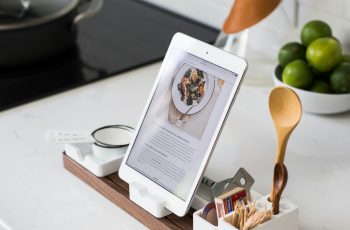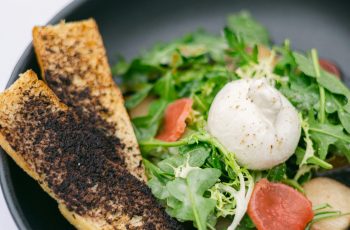Ad Blocker Detected
Our website is made possible by displaying online advertisements to our visitors. Please consider supporting us by disabling your ad blocker.
Have you ever wondered if using a pressure cooker is a healthy cooking method? Well, the answer might surprise you! In this article, we will explore the health benefits of using a pressure cooker and how it can contribute to a nutritious lifestyle. From saving time to preserving nutrients, you will discover why incorporating this handy kitchen appliance into your cooking routine can be a fantastic choice. Whether you’re a busy professional or simply someone who wants to make healthier meals effortlessly, the pressure cooker might just be your new best friend. So let’s dive in and explore the world of pressure cooking together!
Benefits of Pressure Cooking
Retains Nutrients
One of the key benefits of pressure cooking is that it helps retain the nutrients in your food. The high pressure and temperature created inside the cooker help to cook the food quickly, ensuring that the vitamins and minerals are not lost in the process. Traditional cooking methods, such as boiling or steaming, can cause nutrients to leach out into the cooking liquid. However, with pressure cooking, the food is cooked in a closed environment, preventing the loss of valuable nutrients.
Reduces Cooking Time
Pressure cooking can significantly reduce the cooking time for a wide range of foods. With the increased pressure inside the cooker, the boiling point of water is raised, which means that food cooks faster. For example, a tough cut of meat that would normally take hours to cook can be tender and flavorful in just a fraction of the time. This is not only convenient for busy individuals but also helps to preserve the nutrients in the food, as shorter cooking times mean less nutrient loss.
Preserves Flavor
Pressure cooking is known for its ability to preserve the flavor of food. The sealed environment created by the pressure cooker traps the flavors and aromas of the ingredients, resulting in rich and delicious meals. The intense heat and pressure also help to enhance the natural flavors of the food, making every bite a burst of taste. Whether you’re cooking a savory soup or a hearty stew, pressure cooking can bring out the best flavors in your ingredients.
Saves Energy
In addition to its nutritional and flavor benefits, pressure cooking is also an energy-efficient method of cooking. The reduced cooking time means less time spent on the stovetop or using electrical appliances, which ultimately translates to less energy consumption. When compared to other cooking methods, pressure cooking can help you save both time and money by reducing your energy bills. So not only is pressure cooking good for your health, but it’s also good for the environment!
Safety Considerations
Potential for Burns
While pressure cookers offer numerous benefits, it’s important to be aware of potential safety risks, such as the potential for burns. The high-pressure environment inside the cooker can result in steam or hot liquid being rapidly released when the cooker is opened. To avoid burns, it’s crucial to handle the pressure cooker with caution and follow the manufacturer’s instructions on how to safely release the pressure before opening the lid. Always use heat-resistant mitts or gloves when handling the cooker to protect your hands from accidental burns.
Risk of Overcooking
Another safety consideration when using a pressure cooker is the risk of overcooking your food. The high pressure and temperature inside the cooker can cook food faster than traditional methods, and if left unattended, you may end up with overcooked or mushy food. It’s essential to carefully monitor the cooking time, especially when dealing with delicate ingredients or recipes that require precise cooking times. Familiarize yourself with your pressure cooker’s cooking times and adjust accordingly to ensure that your dishes come out perfectly cooked every time.
Pressure Release Precautions
Proper pressure release is vital for the safe operation of a pressure cooker. Rapid pressure release can cause hot steam to shoot out forcefully, posing a risk of burns. It’s crucial to follow the pressure release instructions provided by the manufacturer to prevent any accidents or injuries. Some pressure cookers have a quick-release valve that allows for rapid pressure release, while others have a natural release method where the pressure gradually subsides. Understanding and using the appropriate pressure release method for your pressure cooker is essential for safe and efficient cooking.

Types of Pressure Cookers
Stovetop Pressure Cookers
Stovetop pressure cookers are the traditional type of pressure cookers that are designed to be used on a stovetop burner. They typically consist of a pot with a locking lid and a pressure regulator. Stovetop pressure cookers are known for their durability and ability to reach higher pressures, allowing for faster cooking times. They are versatile and suitable for various cooking tasks, from tenderizing tough cuts of meat to cooking grains and soups. If you prefer a hands-on approach to cooking and want a pressure cooker that can handle larger quantities, a stovetop pressure cooker may be the right choice for you.
Electric Pressure Cookers
Electric pressure cookers, also known as multicookers or instant pots, have gained immense popularity in recent years. These countertop appliances can function as pressure cookers, slow cookers, rice cookers, and more. Electric pressure cookers have programmable settings, making them user-friendly and convenient. They often come with built-in safety features like automatic pressure release and temperature control, providing peace of mind while cooking. Electric pressure cookers are a great option for those who prefer a set-it-and-forget-it approach to cooking or have limited stovetop space.
Choosing a Healthy Pressure Cooker
Materials Used
When choosing a pressure cooker, it’s important to consider the materials used in its construction. Stainless steel and aluminum are the most common materials for pressure cookers. Stainless steel is durable, resistant to corrosion, and can handle high pressures without warping. Aluminum is an excellent conductor of heat but may react with acidic foods, so it’s often used in combination with other materials. Choose a pressure cooker with a high-quality, food-grade stainless steel or aluminum inner pot to ensure safe and healthy cooking.
Safety Features
Safety features are crucial when selecting a pressure cooker. Look for models that have features such as pressure release valves, locking systems, and pressure indicators. These features help to prevent accidents and provide peace of mind while using the pressure cooker. Additionally, some pressure cookers have built-in mechanisms that won’t allow the cooker to be opened until the pressure has been completely released, ensuring safe operation. Prioritizing safety features when choosing a pressure cooker will give you added confidence and security in your cooking.
Size and Capacity
Consider the size and capacity of the pressure cooker to ensure that it meets your cooking needs. Pressure cookers come in a range of sizes, typically measured in quarts. Smaller pressure cookers are suitable for individuals or small families, while larger ones can accommodate bigger portions or batch cooking. It’s important to select a size that fits your typical cooking requirements. Additionally, be mindful of the minimum and maximum fill lines indicated in the pressure cooker to prevent overfilling, which can affect cooking performance and safety.

Nutritional Benefits of Pressure Cooking
Retains Vitamins and Minerals
Pressure cooking is a cooking method that helps to retain the vitamins and minerals in your food. The high heat and pressure inside the cooker minimize the amount of time needed for cooking, which helps to preserve the nutrients that can be lost with prolonged cooking. Studies have shown that pressure cooking can better retain water-soluble vitamins like vitamin C and B vitamins, as well as minerals such as potassium and phosphorus. By choosing to pressure cook your meals, you can ensure that you are maximizing the nutritional value of your food.
Enhances Protein Digestibility
Proteins are an essential macronutrient for the growth and repair of our bodies. Pressure cooking has been found to enhance the digestibility of proteins, making them easier for our bodies to absorb and utilize. The high heat and pressure in the cooker can break down the complex proteins into smaller, more digestible fragments. This is particularly beneficial for individuals with digestive issues or those following a high-protein diet, as pressure cooking can improve the bioavailability of proteins from various food sources.
Increases Antioxidant Activity
Antioxidants are compounds that help to protect our bodies against cellular damage caused by harmful free radicals. Pressure cooking has been shown to increase the antioxidant activity in certain foods. The high heat and pressure can help release and activate antioxidants present in ingredients like vegetables, herbs, and spices. By pressure cooking these antioxidant-rich foods, you can ensure that you are getting the maximum benefits from these protective compounds, promoting overall health and wellbeing.
Effect on Food Texture
Tenderizes Meat
One of the most notable effects of pressure cooking is its ability to tenderize tough cuts of meat. The intense heat and pressure break down the connective tissues in meat, resulting in melt-in-your-mouth tenderness. Pressure cooking can transform inexpensive cuts of meat into succulent and flavorful dishes. Whether you’re cooking beef, pork, or poultry, pressure cooking can save you the time and effort of slow cooking or marinating to achieve the same level of tenderness.
Softens Legumes and Beans
Legumes and beans are packed with essential nutrients like fiber, protein, and vitamins. However, they often require long cooking times to become tender. Pressure cooking can significantly reduce the cooking time for legumes and beans, making them soft and easily digestible. This is particularly helpful for individuals who prefer home-cooked beans but don’t have the time to soak and simmer them for hours. With a pressure cooker, you can enjoy nutritious and delicious legumes in a fraction of the time.
Maintains Vegetable Texture
Unlike boiling or steaming, which can sometimes result in overcooked or mushy vegetables, pressure cooking helps to maintain the texture and color of vegetables. The shorter cooking time minimizes nutrient loss and preserves the vibrant colors and firmness of vegetables. Pressure cooking is particularly suitable for root vegetables, such as carrots and potatoes, which can retain their natural sweetness and texture. Whether you’re cooking a medley of colorful vegetables or a hearty vegetable stew, pressure cooking ensures that your vegetables are cooked to perfection.

Popular Pressure Cooker Recipes
Chicken and Vegetable Soup
Chicken and vegetable soup is a classic recipe that can be easily prepared using a pressure cooker. Simply add chicken, vegetables, herbs, and broth to the cooker, set the cooking time, and let the pressure cooker work its magic. The high pressure and temperature will infuse the flavors of the ingredients, resulting in a hearty and comforting soup that’s perfect for any time of the year.
Beef Stew
Beef stew is another dish that shines when cooked in a pressure cooker. The pressure and heat help to break down tough cuts of beef, resulting in tender and flavorful meat. Combine the beef with vegetables, broth, and spices, and let the pressure cooker create a rich and savory stew that will warm your soul.
Black Bean Chili
Black bean chili is a vegetarian-friendly recipe that can be easily adapted for a pressure cooker. The pressure cooker ensures that the black beans are perfectly cooked and tender, while the combination of spices and vegetables creates a robust and satisfying chili. Serve it with rice or cornbread for a wholesome and delicious meal.
Quinoa Salad
Quinoa salad is a refreshing and nutritious dish that can be made in a pressure cooker. Simply cook the quinoa in the pressure cooker according to the instructions, then toss it with your favorite vegetables, herbs, and dressing. The pressure cooker helps to cook the quinoa quickly and evenly, resulting in fluffy and perfectly cooked grains.
Meal Planning with Pressure Cookers
Batch Cooking Advantage
One of the great advantages of pressure cookers is their ability to cook large quantities of food in a single batch. This is especially helpful for meal planning and prepping, as you can prepare several meals at once and portion them out for the week ahead. Cook a big batch of chili, soup, or stews, and divide them into individual containers to be enjoyed throughout the week. This not only saves you time but also ensures that you have healthy and delicious meals ready whenever you need them.
Time-Saving Option
In today’s fast-paced world, time is of the essence. Pressure cooking offers a time-saving option for busy individuals who still want to enjoy home-cooked meals. With its ability to cook food faster than traditional methods, pressure cooking allows you to whip up a nutritious and flavorful meal in a fraction of the time. Whether you’re a working professional or a busy parent, having a pressure cooker in your kitchen can be a game-changer.
Easy Meal Prep
Meal prepping has become increasingly popular among those looking to save time and eat healthier. Pressure cookers make meal prepping a breeze, as you can quickly and efficiently cook an entire week’s worth of meals in a single cooking session. From grains and proteins to soups and stews, the pressure cooker can handle a wide range of ingredients. By prepping your meals in advance, you can take control of your nutrition, save money on takeout, and ensure that you always have a wholesome meal waiting for you.
Using a Pressure Cooker Safely
Follow Manufacturer’s Instructions
To ensure safe and proper use of your pressure cooker, it’s essential to carefully read and follow the manufacturer’s instructions. Each pressure cooker may have slight variations in operation and safety features, so it’s crucial to familiarize yourself with the specific instructions for your model. From assembly and usage guidelines to cleaning and maintenance tips, the manufacturer’s instructions will provide you with all the necessary information to use your pressure cooker safely.
Properly Release Pressure
Pressure release is a critical step in using a pressure cooker safely. It’s important to follow the recommended pressure release method as stated in the manufacturer’s instructions. Rapid or improper pressure release can lead to burns from the steam or hot liquid forcefully escaping. Depending on your pressure cooker, you may need to use the natural release method, where the pressure gradually subsides, or employ the quick-release valve for rapid pressure release. Understanding and using the appropriate pressure release method for your pressure cooker is essential for safe and smooth operation.
Avoid Overfilling
Overfilling a pressure cooker can compromise its safety and cooking performance. It’s important to adhere to the recommended fill lines indicated in your pressure cooker. Overfilling can prevent the cooker from reaching and maintaining proper pressure, leading to uneven or undercooked food. Additionally, the expansion of food during cooking can cause clogging of the pressure release valve or create a risk of liquid or steam shooting out. To ensure safe and effective cooking, always avoid overfilling your pressure cooker and follow the recommended maximum capacity.
Conclusion
Pressure cooking offers a host of benefits, making it a versatile and efficient cooking tool for the health-conscious individual. From retaining nutrients and reducing cooking time to preserving flavor and saving energy, pressure cooking is a game-changer in the kitchen. With its ability to cook a wide range of recipes, from tenderizing meat to perfecting legumes and maintaining vegetable texture, pressure cooking opens up a world of culinary possibilities. By selecting a healthy pressure cooker that prioritizes safety features, materials used, and appropriate size and capacity, you can enjoy the nutritional benefits of pressure cooking with peace of mind. So, why not incorporate pressure cooking into your meal planning and start enjoying the numerous advantages it has to offer? Happy pressure cooking!

